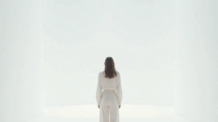One of the biggest challenges in portrait photography is helping your subject look natural and relaxed. Posing doesn’t mean stiff or artificial — in fact, the best portraits often feel spontaneous, unposed, and full of personality. Knowing how to guide your subject gently into a natural posture is a skill that will instantly elevate your portraits.
In this article, you’ll learn practical posing tips to make your subjects look and feel comfortable, confident, and natural in front of the camera.
Start with Comfort and Connection
Before you even lift your camera, focus on making your subject feel at ease. Talk with them, joke a little, and give clear, calm direction. Most people are nervous about being photographed. When they feel relaxed around you, their body language softens, and their expressions become more genuine.
Avoid the “Straight-On” Stance
Unless you’re going for a formal headshot, avoid having your subject face the camera squarely with shoulders flat. This can make the photo feel stiff. Instead, turn the body slightly to the side — about 45 degrees — and have them shift their weight onto their back leg. This instantly adds shape and movement.
Watch the Hands
Hands can make or break a portrait. Don’t let them hang flat by the sides. Instead, give them something to do — touching the face or hair, placed gently in a pocket, crossed arms, or holding a prop. The key is keeping the hands soft and natural. Avoid clenched fists or awkward tension.
Give Direction in Simple Language
Not everyone understands photography jargon. Say things like “turn your shoulders a little” or “drop your chin slightly” instead of “rotate 15 degrees.” Demonstrate with your own body when needed. Small, friendly instructions lead to natural adjustments.
Use Movement to Avoid Stiffness
Static poses often look frozen. Let your subject move a little between shots. Ask them to take a step, shake their shoulders, fix their hair, or turn slowly. These micro-movements help create candid, real-looking images. Catch moments between poses — often the most genuine.
Pay Attention to Posture
Good posture doesn’t mean standing like a soldier. Ask your subject to “stand tall but relaxed” or “imagine a string pulling you up from the top of your head.” This lifts the body naturally without forcing it. For seated poses, have them sit on the edge of a chair and lean slightly forward to engage with the camera.
Use the Environment
Natural-looking portraits often feel connected to the setting. Have your subject lean against a wall, sit on a step, touch a railing, or interact with something around them. This gives their hands something to do and helps anchor their body in a natural way.
Encourage Genuine Expression
Instead of saying “smile,” try making them laugh. Ask questions. Talk about something they love. The best expressions come when someone forgets they’re being photographed. Keep shooting — even while they’re adjusting or reacting. Often the in-between shots hold the most magic.
Use Angles to Flatter
Photographing slightly above eye level softens features and adds approachability. Shooting from below can feel dramatic and bold but may exaggerate certain features. Pay attention to how light and angle affect jawlines, noses, and eyes. Adjust slightly to flatter your subject’s unique face.
Mirror Posing (Optional)
If your subject struggles to follow verbal direction, use mirror posing — you demonstrate the pose, and they copy you. This works well with kids, couples, or shy individuals. Keep it light and playful to avoid pressure.
For Couples: Focus on Interaction
The best couple portraits feel intimate and personal. Don’t pose them like statues — instead, ask them to whisper something, make each other laugh, walk hand in hand, or hold each other close. Give prompts like “tell her something only she would understand” or “look at each other and think about your favorite memory.”
Keep the Energy Positive
People mirror the energy you bring. If you’re calm, confident, and encouraging, your subject will reflect that. If you’re flustered or silent, they’ll feel unsure. Give positive feedback often — say things like “That looks great,” or “Nice, hold that,” to keep momentum flowing.
Final Thoughts
Posing doesn’t have to mean stiff or fake. It’s about guiding your subject gently into postures that feel comfortable, flattering, and real. With a little conversation, movement, and empathy, you can help anyone feel confident in front of the lens — and create portraits that feel alive.
Remember: your job isn’t just to take pictures. It’s to create an experience where your subject feels seen, heard, and celebrated. That’s where the best portraits begin.




Deixe um comentário